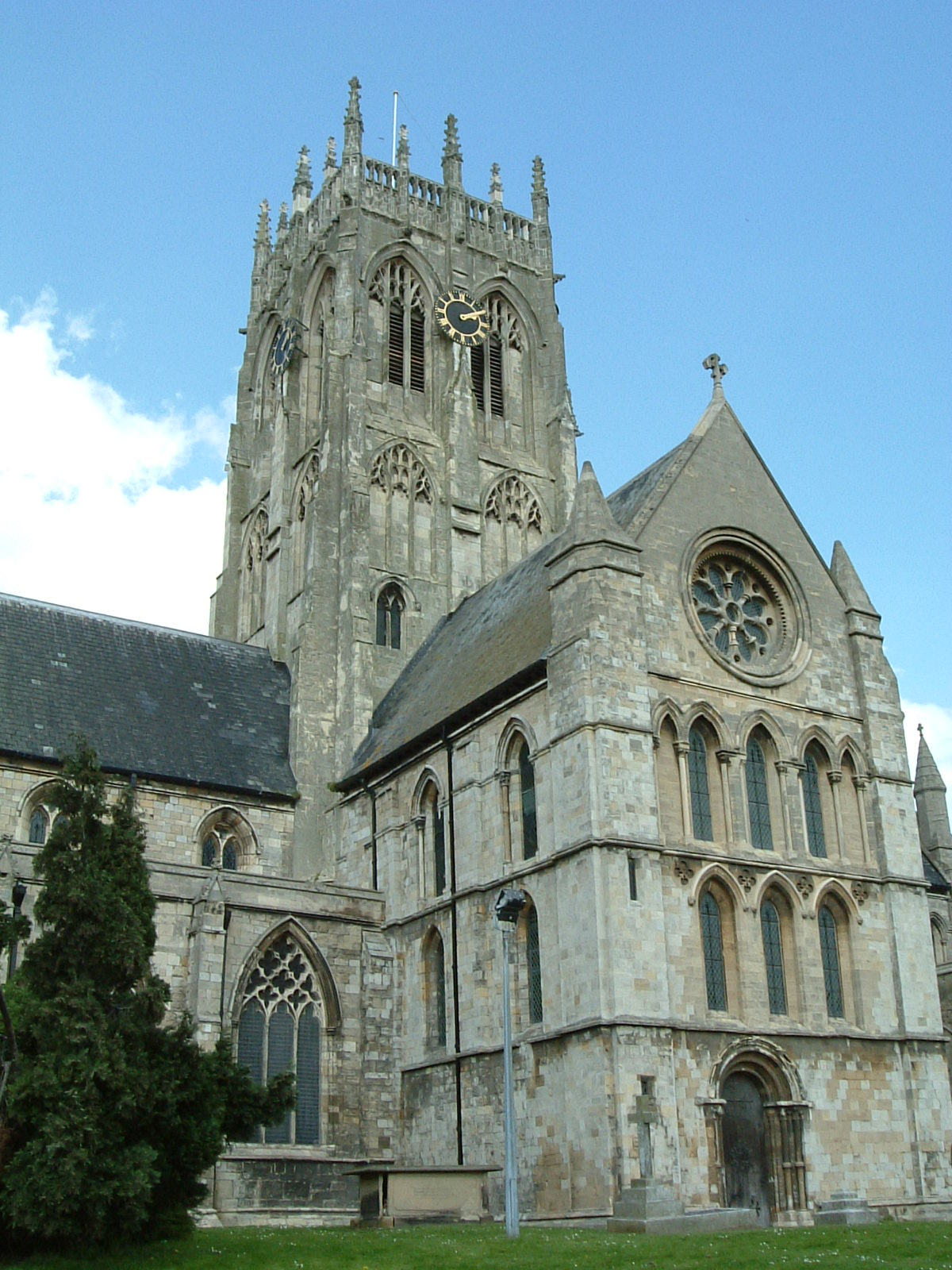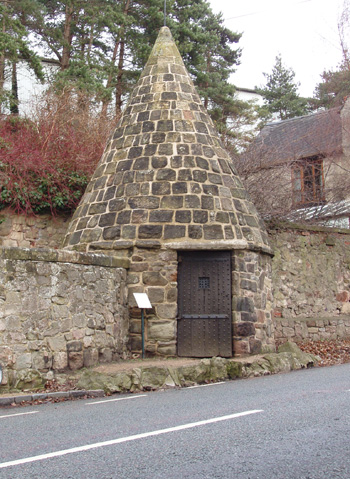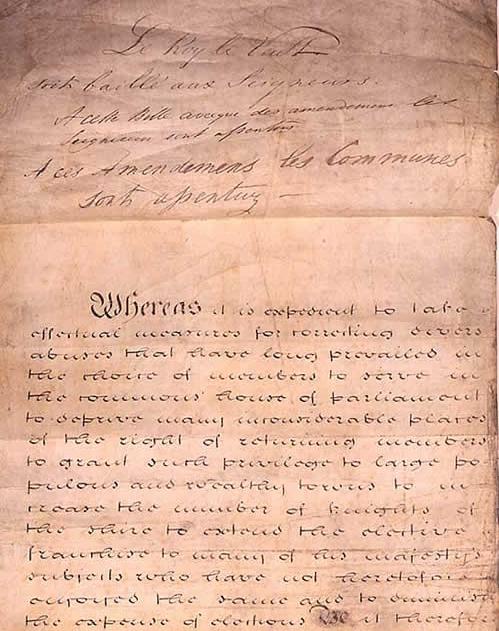|
Hedon Town Hall
Hedon Town Hall is a municipal building in St Augustine's Gate, Hedon, East Riding of Yorkshire, England. The building, which is the meeting place of Hedon Town Council, is a Grade II* listed building. History The council's fine silver collection was established when a member of parliament, John Alured, presented the council with a silver tankard in appreciation of the help he had received from the council in supporting his election to parliament in 1640. The collection was supplemented by further gifts from members of parliament: a wine bowl from Colonel Matthew Alured in 1659, a large silver flagon from Sir Charles Duncombe in 1685 and a silver tankard from Matthew Appleyard in 1689. Another member of parliament and secretary to the Treasury, Henry Guy, presented an early 15th century silver mace, and it was in this context that, in the early 1690s, Guy decided to commission a town hall and present it to the town. The building was designed in the neoclassical style, built ... [...More Info...] [...Related Items...] OR: [Wikipedia] [Google] [Baidu] |
Hedon
Hedon is a town and civil parish in Holderness in the East Riding of Yorkshire, England. It is situated approximately east of Hull city centre. It lies to the north of the A1033 road at the crossroads of the B1240 and B1362 roads. It is particularly noted for the parish church of St. Augustine, known as the 'King of Holderness', which is a Grade I listed building. In 1991, the town had a population of 6,066, which had risen to 6,332 by the time of the 2001 UK census. By the 2011 UK census, Hedon parish had a population of 7,100, History Hedon is not mentioned in the ''Domesday Book'' which leads to the belief that it was a new town created by the Normans as a port. Hedon was at its most prosperous in the 12th and 13th centuries and at one time was the 11th largest port in England. The decline of the port came with the development of the port of Hull and the building of larger ships which were unable to get up the small river to Hedon. Hedon was given its first charter ... [...More Info...] [...Related Items...] OR: [Wikipedia] [Google] [Baidu] |
Village Lock-up
A village lock-up is a historic building once used for the temporary detention of people in England and Wales, mostly where official prisons or criminal courts were beyond easy walking distance. Lockups were often used for the confinement of drunks, who were usually released the next day, or to hold people being brought before the local magistrate. The archetypal form comprises a small room with a single door and a narrow slit window, grating or holes. Most lock-ups feature a tiled or stone-built dome or spire as a roof and are built from brick, stone and/or timber. Such a room was built in many shapes; many are round, which gives rise to a sub-description: the punishment or village round-house. Village lock-ups, though usually freestanding, were often attached to walls, tall pillar/tower village crosses or incorporated into other buildings. Varying in architectural strength and ornamentation, they were all built to perform the same function. Nicknames and forms They have acqui ... [...More Info...] [...Related Items...] OR: [Wikipedia] [Google] [Baidu] |
Government Buildings Completed In 1693
A government is the system or group of people governing an organized community, generally a state. In the case of its broad associative definition, government normally consists of legislature, executive, and judiciary. Government is a means by which organizational policies are enforced, as well as a mechanism for determining policy. In many countries, the government has a kind of constitution, a statement of its governing principles and philosophy. While all types of organizations have governance, the term ''government'' is often used more specifically to refer to the approximately 200 independent national governments and subsidiary organizations. The major types of political systems in the modern era are democracies, monarchies, and authoritarian and totalitarian regimes. Historically prevalent forms of government include monarchy, aristocracy, timocracy, oligarchy, democracy, theocracy, and tyranny. These forms are not always mutually exclusive, and mixed go ... [...More Info...] [...Related Items...] OR: [Wikipedia] [Google] [Baidu] |
Grade II* Listed Buildings In The East Riding Of Yorkshire ...
There are over 20,000 Grade II* listed buildings in England. This page is a list of the 183 of these buildings in the ceremonial county of the East Riding of Yorkshire. City of Kingston upon Hull East Riding of Yorkshire See also * :Grade II* listed buildings in the East Riding of Yorkshire Notes References National Heritage List for England {{DEFAULTSORT:Grade II listed buildings in the East Riding of Yorkshire Lists of Grade II* listed buildings in England by county East Riding of Yorkshire The East Riding of Yorkshire, or simply East Riding or East Yorkshire, is a ceremonial county and unitary authority area in the Yorkshire and the Humber region of England. It borders North Yorkshire to the north and west, South Yorkshire to t ... [...More Info...] [...Related Items...] OR: [Wikipedia] [Google] [Baidu] |
Holderness (borough)
{{EastRiding-geo-stub ...
Holderness was a local government district and borough in northern England, named for the Holderness peninsula. It was formed on 1 April 1974 along with the non-metropolitan county of Humberside in which it was situated. It was formed from part of the administrative county of Yorkshire, East Riding, namely: *The municipal borough of Hedon, *The urban districts of Hornsea and Withernsea, *The Holderness Rural District. On 1 April 1996, Humberside and the borough were abolished, and it became part of the new unitary East Riding of Yorkshire. References Former non-metropolitan districts of Humberside Former boroughs in England borough A borough is an administrative division in various English-speaking countries. In principle, the term ''borough'' designates a self-governing walled town, although in practice, official use of the term varies widely. History In the Middle Ag ... [...More Info...] [...Related Items...] OR: [Wikipedia] [Google] [Baidu] |
World War I
World War I (28 July 1914 11 November 1918), often abbreviated as WWI, was one of the deadliest global conflicts in history. Belligerents included much of Europe, the Russian Empire, the United States, and the Ottoman Empire, with fighting occurring throughout Europe, the Middle East, Africa, the Pacific, and parts of Asia. An estimated 9 million soldiers were killed in combat, plus another 23 million wounded, while 5 million civilians died as a result of military action, hunger, and disease. Millions more died in genocides within the Ottoman Empire and in the 1918 influenza pandemic, which was exacerbated by the movement of combatants during the war. Prior to 1914, the European great powers were divided between the Triple Entente (comprising France, Russia, and Britain) and the Triple Alliance (containing Germany, Austria-Hungary, and Italy). Tensions in the Balkans came to a head on 28 June 1914, following the assassination of Archduke Franz Ferdin ... [...More Info...] [...Related Items...] OR: [Wikipedia] [Google] [Baidu] |
Acanthus (plant)
''Acanthus'' is a genus of about 30 species of flowering plants in the family Acanthaceae, native to tropical and warm temperate regions, with the highest species diversity in the Mediterranean Basin and Asia. This flowering plant is nectar producing and is susceptible to predation by butterflies, such as ''Anartia fatima'', and other nectar feeding organisms. Common names include Acanthus and Bear's breeches. The generic name derives from the Greek term (''akanthos'') for ''Acanthus mollis'', a plant that was commonly imitated in Corinthian capitals. The genus comprises herbaceous perennial plants, rarely subshrubs, with spiny leaves and flower spikes bearing white or purplish flowers. Size varies from in height. Selected species *'' Acanthus arboreus'' Forssk. (1775) *'' Acanthus austromontanus'' Vollesen *''Acanthus balcanicus'' Heywood & I.Richardson ( Syn. ''Acanthus hungaricus'' ( Borbás) Baenitz, ''Acanthus longifolius'' Host) — native to the Balkans south of Dalma ... [...More Info...] [...Related Items...] OR: [Wikipedia] [Google] [Baidu] |
Coat Of Arms
A coat of arms is a heraldry, heraldic communication design, visual design on an escutcheon (heraldry), escutcheon (i.e., shield), surcoat, or tabard (the latter two being outer garments). The coat of arms on an escutcheon forms the central element of the full achievement (heraldry), heraldic achievement, which in its whole consists of a shield, supporters, a crest (heraldry), crest, and a motto. A coat of arms is traditionally unique to an individual person, family, state, organization, school or corporation. The term itself of 'coat of arms' describing in modern times just the heraldic design, originates from the description of the entire medieval chainmail 'surcoat' garment used in combat or preparation for the latter. Roll of arms, Rolls of arms are collections of many coats of arms, and since the early Modern Age centuries, they have been a source of information for public showing and tracing the membership of a nobility, noble family, and therefore its genealogy across tim ... [...More Info...] [...Related Items...] OR: [Wikipedia] [Google] [Baidu] |
Grotesque (architecture)
In architecture, a grotesque () or chimera () is a fantastic or mythical figure used for decorative purposes. Chimerae are often described as gargoyles, although the term gargoyle technically refers to figures carved specifically as terminations to spouts which convey water away from the sides of buildings. In the Middle Ages, the term ''babewyn'' was used to refer to both gargoyles and chimerae. This word is derived from the Italian word ''babuino,'' which means "baboon". A grotesque is a decorative feature found in architecture carved from stone often depicting whimsical, mythical creatures in dramatic or humorous ways. Most commonly grotesques are a decoration that surround waterspouts and drains largely on historic buildings. Grotesques, also often referred to as chimera, have historically been a key element of architecture in many periods including the Renaissance and Medieval periods and have stylistically developed in conjunction with these times. While they depicted a wide ... [...More Info...] [...Related Items...] OR: [Wikipedia] [Google] [Baidu] |
Rustication (architecture)
Two different styles of rustication in the Palazzo Medici-Riccardi in Florence; smooth-faced above and rough-faced below.">Florence.html" ;"title="Palazzo Medici-Riccardi in Florence">Palazzo Medici-Riccardi in Florence; smooth-faced above and rough-faced below. Rustication is a range of masonry techniques used in classical architecture giving visible surfaces a finish texture that contrasts with smooth, squared-block masonry called ashlar. The visible face of each individual block is cut back around the edges to make its size and placing very clear. In addition the central part of the face of each block may be given a deliberately rough or patterned surface. Rusticated masonry is usually "dressed", or squared off neatly, on all sides of the stones except the face that will be visible when the stone is put in place. This is given wide joints that emphasize the edges of each block, by angling the edges ("channel-jointed"), or dropping them back a little. The main part of the ... [...More Info...] [...Related Items...] OR: [Wikipedia] [Google] [Baidu] |
Stucco
Stucco or render is a construction material made of aggregates, a binder, and water. Stucco is applied wet and hardens to a very dense solid. It is used as a decorative coating for walls and ceilings, exterior walls, and as a sculptural and artistic material in architecture. Stucco can be applied on construction materials such as metal, expanded metal lath, concrete, cinder block, or clay brick and adobe for decorative and structural purposes. In English, "stucco" sometimes refers to a coating for the outside of a building and "plaster" to a coating for interiors; as described below, however, the materials themselves often have little to no differences. Other European languages, notably Italian, do not have the same distinction; ''stucco'' means ''plaster'' in Italian and serves for both. Composition The basic composition of stucco is cement, water, and sand. The difference in nomenclature between stucco, plaster, and mortar is based more on use than composition. Until ... [...More Info...] [...Related Items...] OR: [Wikipedia] [Google] [Baidu] |
Reform Act 1832
The Representation of the People Act 1832 (also known as the 1832 Reform Act, Great Reform Act or First Reform Act) was an Act of Parliament, Act of Parliament of the United Kingdom (indexed as 2 & 3 Will. IV c. 45) that introduced major changes to the Voting system, electoral system of England and Wales. It abolished tiny Electoral district, districts, gave representation to cities, gave the vote to small landowners, tenant farmers, shopkeepers, householders who paid a yearly rental of £10 or more, and some lodgers. Only qualifying men were Suffrage, able to vote; the Act introduced the first explicit statutory bar to Women's suffrage, women voting by defining a voter as a male person. It was designed to correct abuses – to "take effectual Measures for correcting divers Abuses that have long prevailed in the Choice of Members to serve in the British House of Commons, Commons House of Parliament". Before the reform, most members nominally represented boroughs. The number of ... [...More Info...] [...Related Items...] OR: [Wikipedia] [Google] [Baidu] |



_Chapelle_Notre-Dame-des-Trois-Fontaines_08.jpg)

